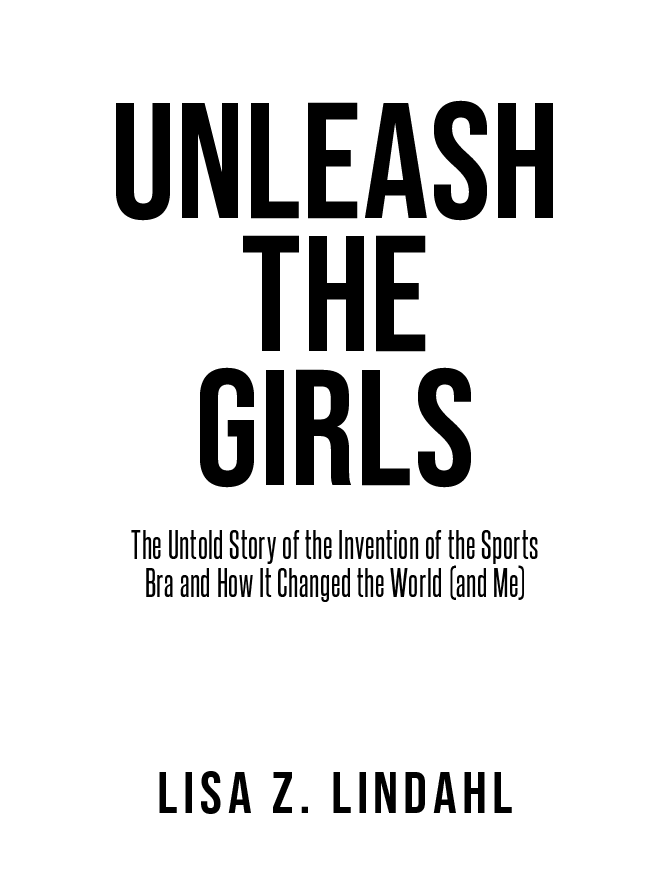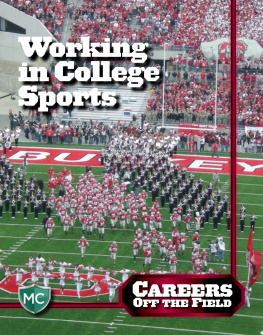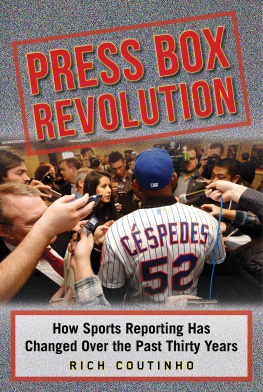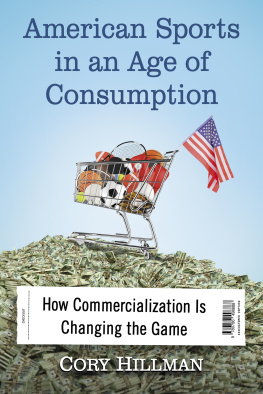Praise for Unleash the Girls
The sports bra was and is more than a piece of sporting equipment, it has become a symbol and a vehicle for women and girls to propel themselves forward without inhibition towards the future that they are creating. Prior to its inception, the concept of women running, jumping, lifting, competing, basically moving dynamically, caused reticence. NOW, WE RUN AND MOVE in every athletic space and then some. To say I dont think about my sports bra anymore is to say that I am FREE to accomplish and go after anything I want. I am EMPOWERED TO EMBRACE OPPORTUNITY!
Brandi Chastain, American retired soccer player, two-time
FIFA Womens World Cup champion, two-time Olympic
gold-medalist, coach, and sports broadcaster
With cogent reflections on American cultural history and the shifts that laid the groundwork for womens liberation, Lindahl weaves a narrative that is both intimate and topical....[A]n inspiring narrative about changing the world through fearless innovation.
Publishers Weekly, BookLife Prize
The introduction of the sports bra did more than improve athletic performance. It represented a revolution in ready-to-wear clothing, and for many women athletespast, present, and futureit actually made sports possible.
Smithsonian Museum of American
History Archivist Cathy Keen

Disclaimer:
This work depicts actual events in the life of the author as truthfully as recollection permits and/or can be verified by research. Occasionally, dialogue consistent with the character or nature of the person speaking has been supplemented. All persons within are actual individuals; there are no composite characters. The names of some individuals have been changed or only partially included to respect their privacy.
2019 Eugenie Z. Lindahl
All rights reserved.
Hardback ISBN: 978-1-647040-06-2
Paperback ISBN: 978-1-950282-43-2
eBook ISBN: 978-1-950282-44-9
Covering the bases: Jogbra is now a trademark of HBI Branded Apparel Enterprises, LLC, Winston Salem, NC
Distributed by Bublish, Inc.
Cover Design by Berge Design
Table of Contents
S ometimes, a single moment captures and reveals the essence of your lifes purpose. For me, it happened one day near the end of winter in Vermont. It was not quite springtimemud season, as its calleda difficult time of year for souls yearning for sunshines warmth and the first signs of green. I was standing at the window of my studio office overlooking Lake Champlainalways a changeable, capricious view. This day, I noticed a wind was tickling the top of the lakes slate -c olored surface. But my attention was turned inward. I was wrestling with my identity and how the title successful businesswoman fit into the whole of my life. I chafed under the typical introduction of Meet Lisa, the Jogbra Lady! Wasnt I more than just this one achievement? Had my entrepreneurial journey made a difference in the world? Did any of it really ma tter?
Nature, as she always did, called me back. Outside my window, the gray sky was beginning to lift, and just enough midday light was filtering through to create a bright and otherworldly sparkle on the lakes now choppy water. The light silhouetted the dark tree branches lining the lakes edge, highlighting the baby yellow leaf buds clinging there. A blue jays call pierced my silence, and suddenly I was immersedif only for a momentin a deep sense of timeless and complete be auty.
There was my an swer.
In that moment, I realized that what really mattered was beauty . Not physical beauty. Not glamour, which is so often confused with beauty in todays culture. No, what I had experienced was much bigger. It was True Beauty , transcendent and everlas ting.
Since that moment, Ive made it my lifes work to learn the way of True Beauty and teach others how to find and experience it and use it to create greater harmony in our w orld.
My journey to that life -c hanging moment on Lake Champlain was long and circuitous. It began in a very different time and placea time when my relationship with myself was muddled and my understanding of beauty was still nascent. I was a young, artistic woman trying to find herself. It was the early 1970s, and we were all trying to find ourselves. The womens liberation movement, as it was then called, had swept across the United States. The changes were so profound that Time magazine awarded its 1975 Man of the Year cover to American Women. Only two years earlier, tennis star Billy Jean King had captivated the nations attention when she beat Bobby Riggs in the Battle of the Sexes on the tennis court. Women were coming into their own, working hard to carve out new roles for themselves at home and in sports, culture, politics, and busi ness.
The nation in general was also beginning to move. We were getting up off the couch, where wed been watching TV shows like All in the Family , Maude , M*A*S*H , and Bewitched , and joining the fitness revolution. People started joggingen masse. Its estimated that twenty -f ive million Americans took up running in the 1970s and 1980s, including President Jimmy Ca rter.
Its at this unique intersection between feminism and athleticism that my entrepreneurial story began. With the passage of Title IX in 1972, which prohibited discrimination on the basis of sex in any federally funded education program, doors were finally opening for young women not only in the classroom but also on the field. But Title IX could not erase the discomfort and self -c onsciousness that were insidious ingredients in keeping girls and women off those fi elds.
Along with the other young women of my baby boomer generation, I was trying to find my way. In my midtwenties I had headed back to the college classroom and, as part of my self -r einvention , had taken up jogging. My new love of running, though, came with a problem: my breasts bounceda lot. It was a constant distraction and discomfort and the only thing not great about my runs. I needed a solu tion.
When I invented the sports bra in 1977, it completed what Title IX had started. It leveled the playing field for female athletes and athletic women. It turned out to be the one -t wo punch that knocked out old attitudes and restrictions. You might even say it unleashed the g irls.
The Jogbra files, prototype, and history are now preserved at the Smithsonian Museum of American History, where archivist Cathy Keen said in 2015, The introduction of the sports bra did more than improve athletes performances. It represented a revolution in ready - t o -w ear clothing, and for many women athletespast, present, and futureit actually made sports poss ible.
The original Jogbra companys slogan was by women, for women. I believe that womens stories must be told andwhen possibleby the women who lived the tale. The story of the invention of the first sports bra is very much a story of women. It is also a big part of my life story. This is the improbable story of how I created the first sports bra and how it changed the worldas well as the course of my life.
A small group of thoughtful people could change the w orld.
Indeed, its the only thing that ever has.
~ Margaret Mead
L ets face it, in 1977, I was an unlikely candidate to become a business success story, let alone change the world for women in sports, especially seeing as Id never been particularly athletic. My formal business education consisted of a postcollegiate, one -y ear program at the Katharine Gibbs Secretarial School. I was an aspiring artist, working in stained glass and selling my work at craft fairs. At the same time, I was working part -t ime at Threshold, a rural, residential treatment facility for adolescent drug abusers where my husband, Al, worked as a counselor. I administered tests and did secretarial stuff. I had little interest in a nine - t o -f ive sort of traditional career. At twenty -e ight , I was working on finishing my undergraduate degree at the University of Vermont (UVM) in Burlington, my marriage of seven years to Al was shaky, and I couldnt drive a car due to having epilepsy. It was quite an odd re sume.
Next page












